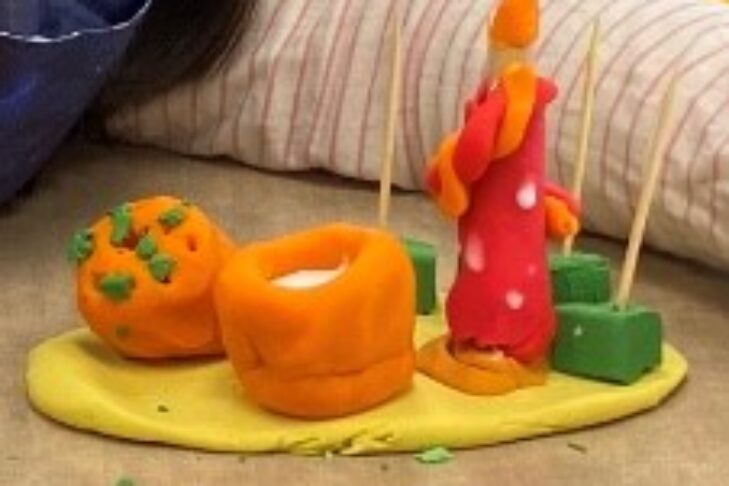One of my favorite parts of the weekly Shabbat experience is its end. I know, strange, right?! There are so many wonderful aspects about the 25 hours of Shabbat that I cherish, including gathering with friends and family for special Shabbat meals, eating delicious challah and having the opportunity to take a day off from the everyday distractions to focus on oneself and recharge the batteries.
Therefore, why do I look forward to its end? The reason is that I love the Havdalah ceremony—the Jewish religious ceremony that symbolically marks the end of Shabbat and initiates a new week.
Similar to the way that we bring in Shabbat, during Havdalah, we light and make a blessing over a (special) candle and sanctify some wine/grape juice. However, instead of making a blessing over challah, we smell and make a blessing over spices and, in addition, recite a fourth prayer that distinguishes between the sacred day of Shabbat and the profanity of the rest of the week. This ceremony allows us to gently transition from the joy of Shabbat into the rest of the week. In my third and fourth grade class this year, we spent many weeks learning about the ritual of Havdalah and preparing to lead a community-wide Havdalah service for parents and friends. One of my favorite parts about teaching this unit is watching how excited the students get to take on an active role in the ceremony.
Every week, the students rotate jobs so they each get an opportunity to be a leader in a different way. Some of these roles include holding and later tilting the Havdalah candle into the leftover wine, pouring and passing out the grape juice, carrying the spice bag around the room for everybody to sniff, and leading the blessings at the front of the classroom. By implementing this routine, every student is consistently taking control of their learning. My other favorite part about teaching Havdalah is hearing the students’ guesses and logic for how many seconds the sizzle from the fire into the grape juice will last from week to week. As we always say in my classroom, the bigger the sizzle, the better the week!
One of the best ways to create meaning is to develop or discover a personal connection to the subject. In my class, one of the ways we encapsulated everything we learned about Havdalah is by designing our own Havdalah sets.
Design Your Own Havdalah Set
Needs to include: Candle holder for Havdalah candle, cup for wine/grape juice and a container for spices
Ingredients
- Paper
- Pen
- Markers/crayons (optional)
- Clay (we used Model Magic), Play-Doh or other moldable material (optional)
- Scissors (optional)
- Cardboard (optional)
- Anything you can think of!
Directions
- Brainstorm what you want your Havdalah set to look like: A theme? What colors? What size? How can you personalize it?
- Draw a detailed or quick sketch of what each item will look like.
- Bonus: Design your own Havdalah candle as well!
- Option 1: Turn your idea into 3-D! Use clay to mold the set. Make it out of cardboard.
- Option 2: If you don’t want to make a physical representation, try designing your Havdalah set on the computer and then print it out.
- Keep the sketch, picture or physical model of your Havdalah set near where you recite Havdalah to look at or use every week!
Tips/tricks:
- When designing your spice container, make sure to include some holes! Spice containers have holes in them so the sweet scent of the spices and herbs will waft out into the air.
- Whether you are making a 3-D model or a virtual one, be sure to measure whether your Havdalah candle fits into the candle holder. The last thing you want is for the candle to fall!
- If you choose to design your own Havdalah candle, remember this: The candle must have at least two wicks because tradition teaches us that the blessing over the fire is in the plural form (“the lights of fire”).
Leila Small, a Brandeis University 2022 graduate with a double major in education studies and psychology and minor in Near Eastern and Judaic studies, taught at BJEP for three years, most recently leading our third and fourth grade classroom.
This post has been contributed by a third party. The opinions, facts and any media content are presented solely by the author, and JewishBoston assumes no responsibility for them. Want to add your voice to the conversation? Publish your own post here. MORE


